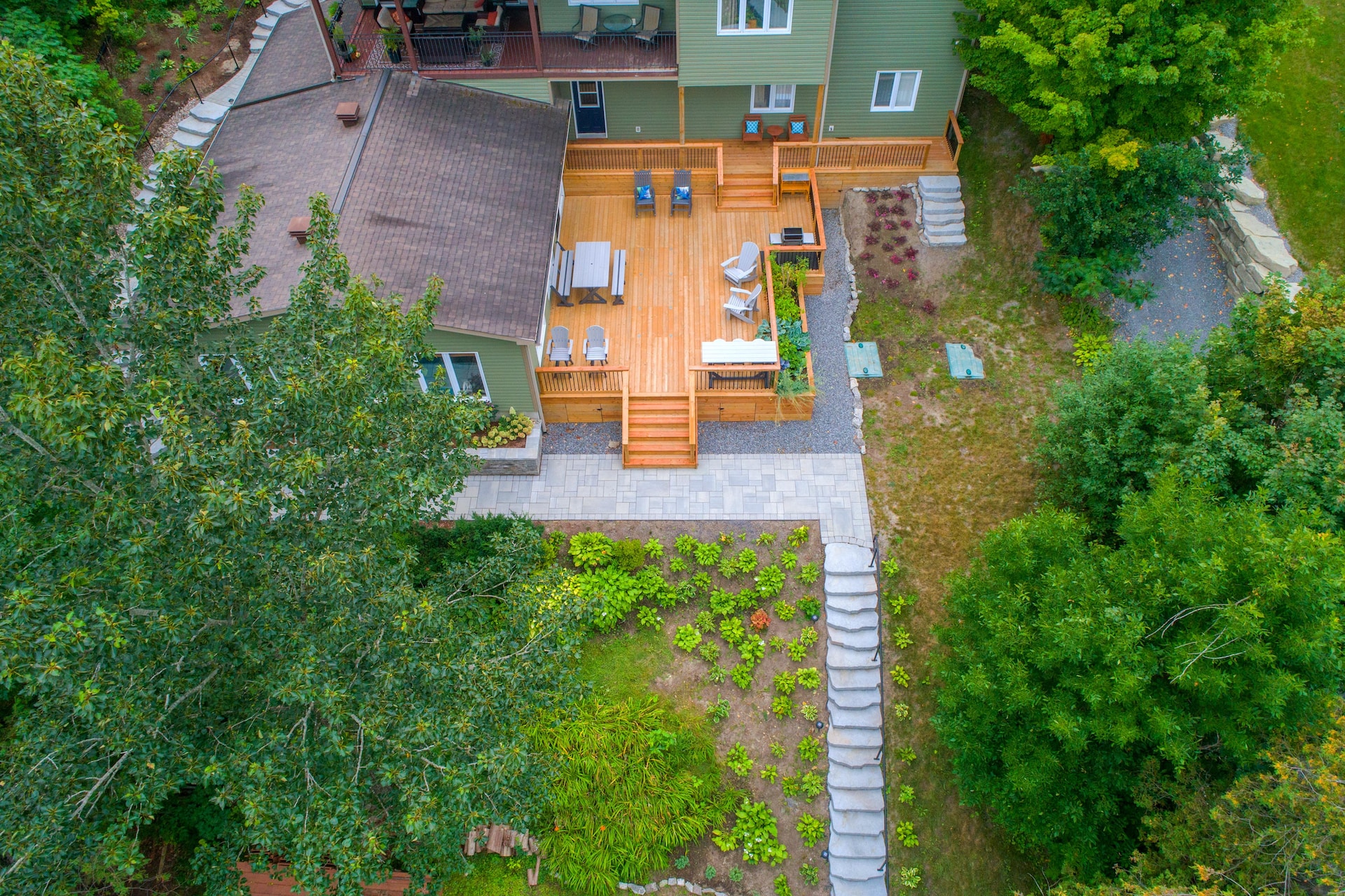Hardscape elements like patios, walkways, and retaining walls are essential for your outdoor living space. They not only enhance the aesthetics of your landscape but also provide functional and practical areas for relaxation and entertainment.
To make the most of your hardscape design, consider these creative tips and ideas for creating stunning patios, walkways, and retaining walls.
1. Plan Your Layout
Before diving into hardscape design, plan the layout of your outdoor space. Consider how you’ll use each area, whether for dining, lounging, or gardening. Define clear pathways and functional zones to maximize usability and aesthetics.
2. Choose High-Quality Materials
Select durable and weather-resistant materials for your hardscape features. Common choices include:
- Pavers: Versatile and available in various colors and shapes.
- Natural Stone: Provides a timeless and elegant look with options like flagstone, slate, or granite.
- Concrete: Offers affordability and versatility, allowing for various finishes and colors.
- Brick: Classic and enduring, perfect for traditional and rustic designs.
- Wood: Ideal for retaining walls and gives a warm and natural feel to your landscape.
3. Consider Functionality
Ensure that your hardscape elements serve a functional purpose. For patios, think about seating, dining, and cooking areas. Walkways should provide easy access between different parts of your outdoor space, while retaining walls can be functional and decorative.
4. Incorporate Design Patterns
Add visual interest to your hardscape with design patterns. For patios, consider intricate tile layouts or a mix of contrasting pavers. In walkways, use geometric designs or create curved paths for a softer look. Retaining walls can feature patterns in the placement of stones or bricks.
5. Create Borders and Edging
Define the borders of your hardscape features with edging materials like bricks, stones, or pavers. Borders help delineate the space and create a neat and finished appearance.
6. Combine Materials and Textures
Mix and match different materials and textures to add depth and character to your hardscape design. Combining materials like stone and wood or using contrasting textures can create a visually appealing landscape.
7. Include Lighting
Incorporate lighting into your hardscape elements to extend the functionality of your outdoor space into the evening. Consider path lights, uplights for retaining walls, or string lights for your patio to create a cozy and inviting atmosphere.
8. Think Vertically with Retaining Walls
Retaining walls can serve as decorative focal points while addressing landscape grading and erosion control. Consider tiered retaining walls to create terraced gardens or seating areas.
9. Add Water Features
Enhance the ambiance of your hardscape design with water features like fountains or ponds. The sound of flowing water can create a relaxing atmosphere.
10. Blend with Surrounding Landscape
Ensure that your hardscape design complements the natural surroundings. Incorporate native plants, shrubs, and flowers to soften the hardscape features and create a harmonious balance between the built environment and nature.
11. Seek Professional Guidance
For complex hardscape projects or when dealing with challenging terrain, consult with a professional landscape designer or contractor. They can provide expert advice and ensure proper construction techniques.
With thoughtful hardscape design, your outdoor space can become a beautiful and functional extension of your home. Whether planning a patio for entertaining, walkways for easy navigation, or retaining walls to level your landscape, these tips and ideas can help you create a stunning and inviting outdoor environment.
